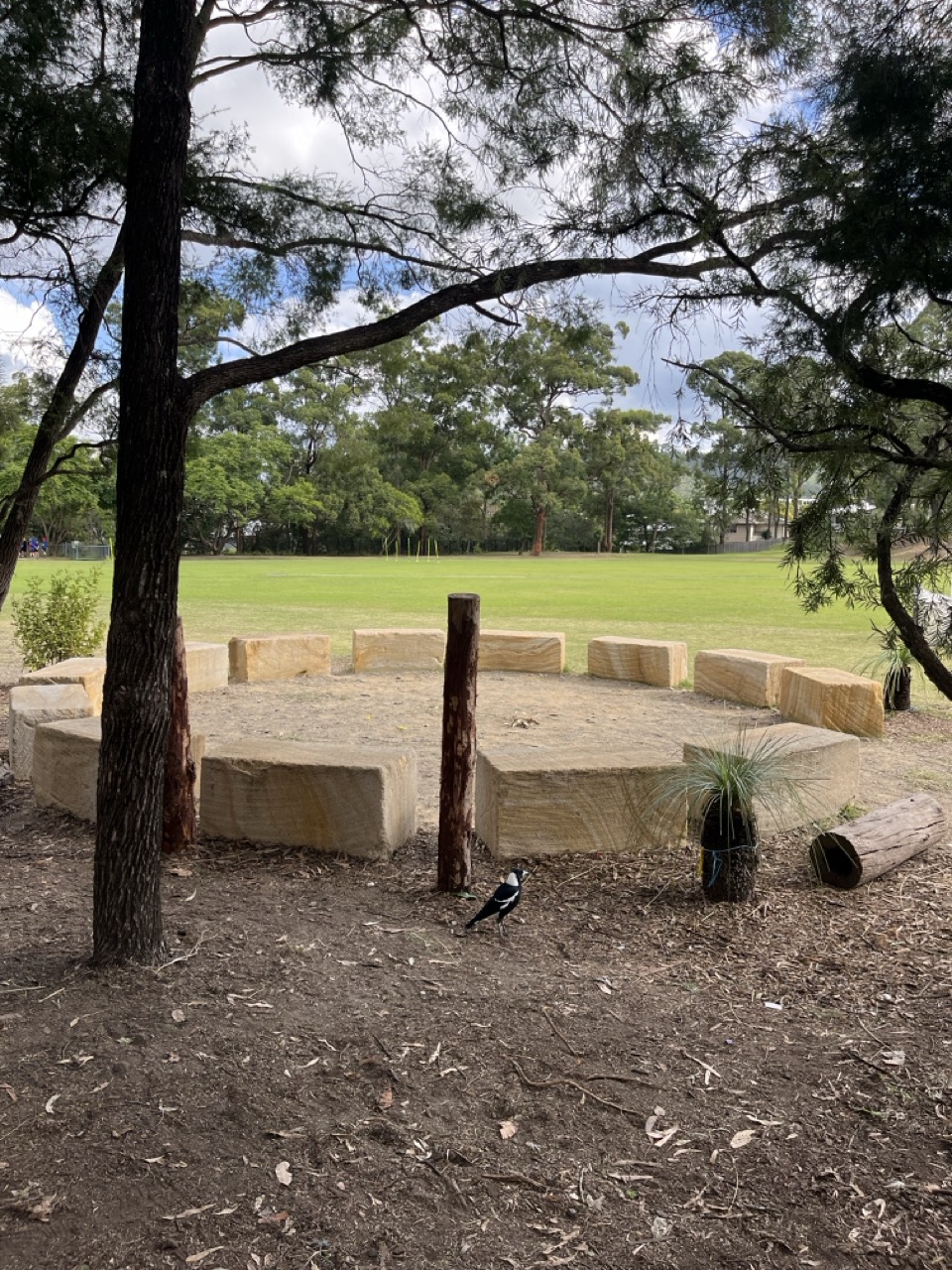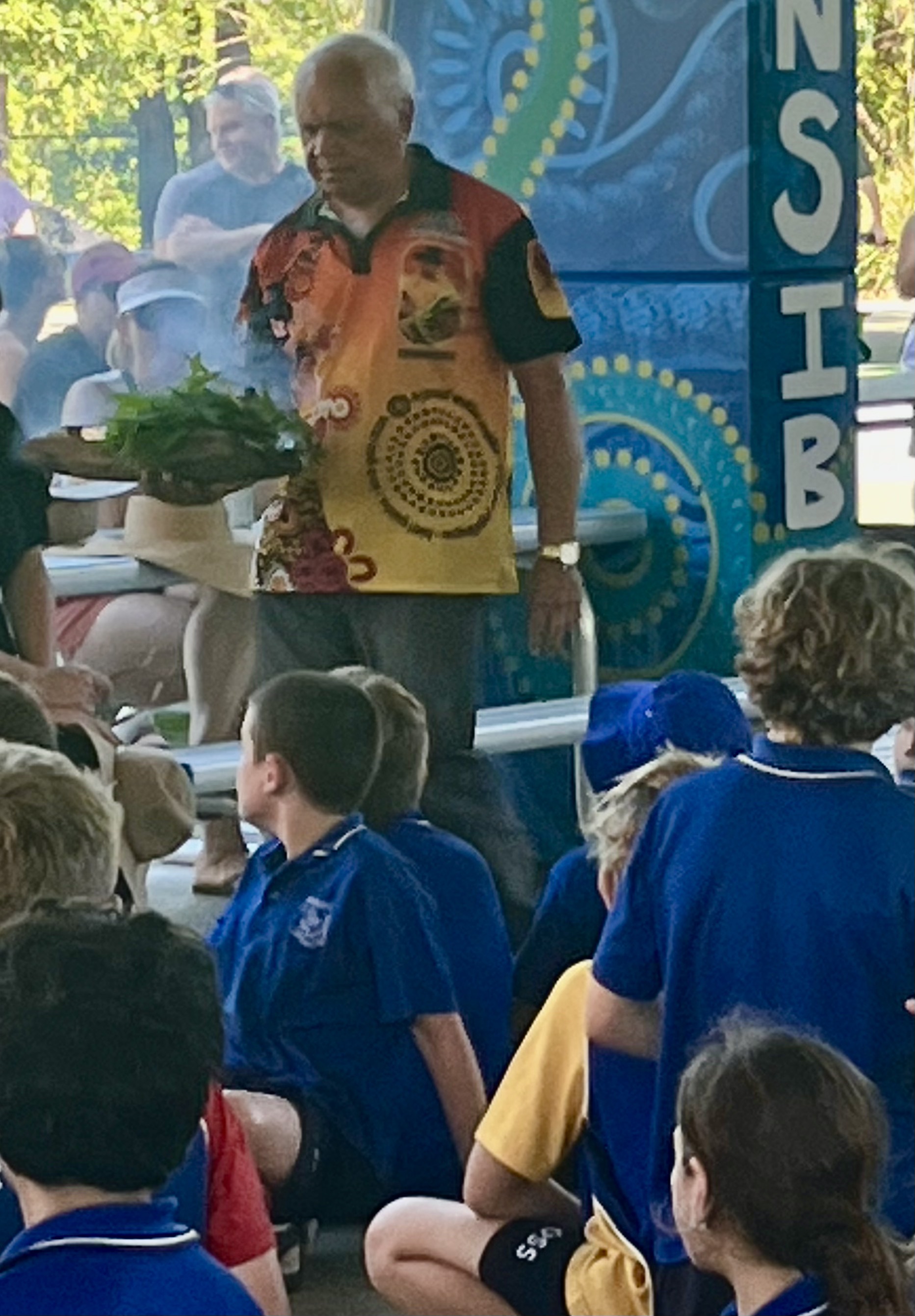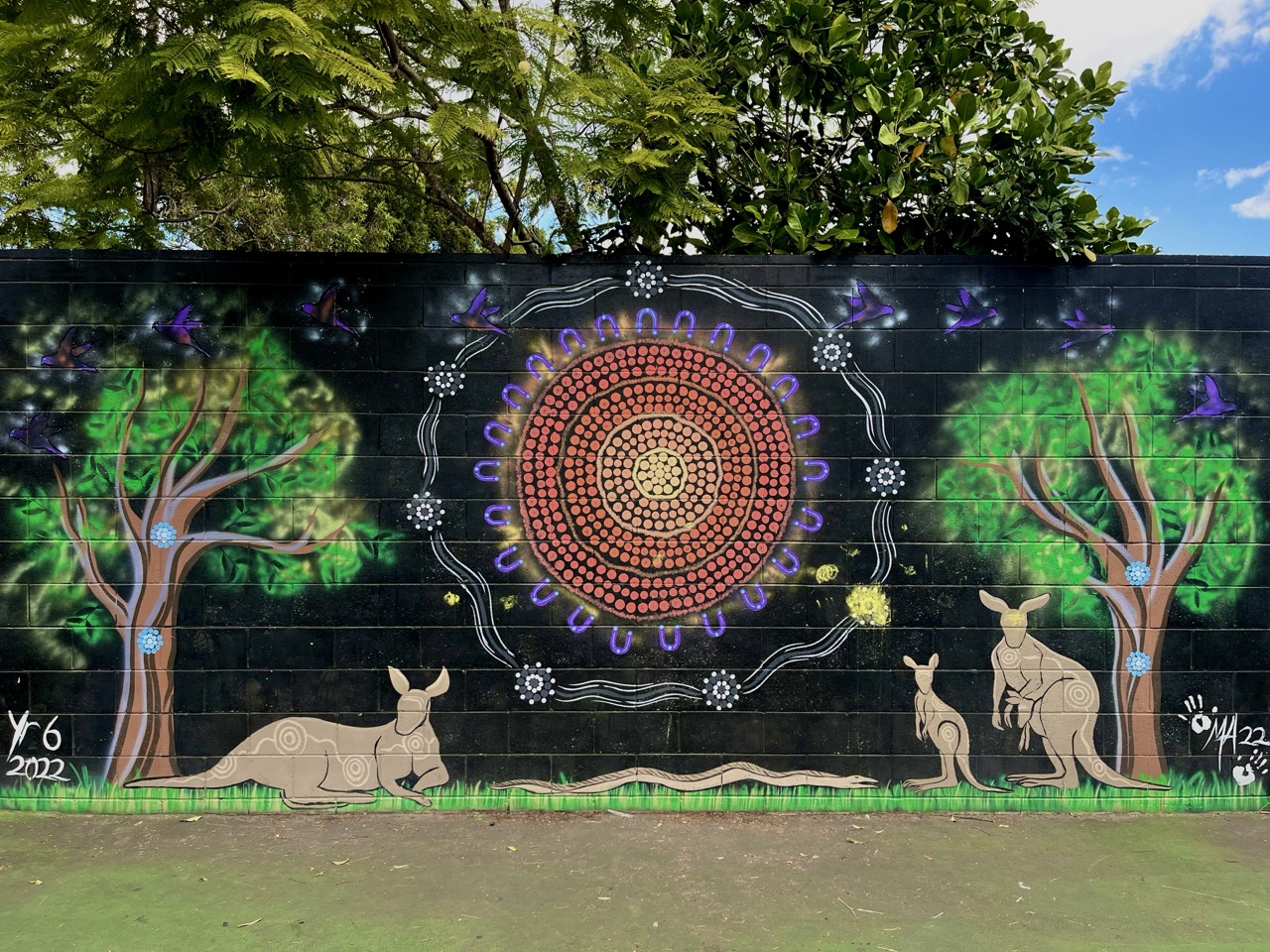
Oakleigh State School has been on a journey to ensure our school is well connected to learning about and through Aboriginal and Torres Strait Islander perspectives and cultures. A recent focus has been to ensure our school promotes visual connections to these aspects. Supported by our P&C association, in 2022 our year 6 students engaged artist Ambrose Killian to add indigenous elements to our school hittiing wall as well as providing art lessons on the meanings behind these motifs.


The next focus has been to reinvigorate the pillars of our undercover area. Artists Jessica Skeen and CJ were commissioned to complete this enormous task. Michaela Costello, an Oakleigh teacher and proud Gamillaraay woman researched words to represnt our school pillars in her Gamillaraay language. These are captured below.
The Indigenous language words written on the pillars are in Gamilaraay language. Gamilaraay can also be pronounced/spelled as Kamilaroi or Gomeroi. Gamilaraay Country is circled on the map below and includes NSW towns like Tamworth, Gunnedah, Coonabarabran, Narrabri, Moree, Pilliga, Collarenebri and Inverell. It also extends slightly up into the QLD town of Goondiwindi and surrounding areas. The Gamilaraay language group also includes the Yuwaalaraay and Yuwaalayaay people as seen on the second map. Like many Indigenous languages, Gamilaraay has been revived or awoken from sleep and is now taught at some NSW TAFES and universities.
Interesting facts:
- Kid Laroi and Ray Martin are Gamilaraay 😊
- Gamilaraay were known to travel to the Bunya nut festival on the Bunya Mountains during harvest season.
- Many (not all) Indigenous languages are named for their word for 'no'. Gamil means 'no' in Gamilaraay so it translates to the people who use gamil for 'no'.
Indigenous languages are attached to Country and some words and stories are too sacred to be shared or to even leave Country. Ideally the words would be Turrbal or Yuggera on the pillars but they were too difficult for our local elder, Uncle Joe to source, so he suggested that Gamilaraay words be used. Maroochy Barambah (Turrbal Elder) has also given permission for Gamilaraay to be taught and used here at Oakleigh.
Winanga-y (pronounced winung-ay) was chosen to represent respect. It means to know, remember, think, understand and is used as the word for respect when acknowledging Country in Gamilaraay. The -y means it is a -y class verb and will come with different endings depending on use and tense etc.
Burrul bina (u sounds like oo in book) was chosen to represent responsible. It is an adjective that means clever and wise. It literally translates to many/ big ears. If you are an excellent listener then you will be clever and wise.
Maaru (pronounced mar- ew like in chew) was chosen to represent safe. It means to do something carefully and to do it well.
Badjinbal (pronounced bud-jin-bul) was chosen to represent resilient. It translates as little by little which aligns well with a growth mindset as well.
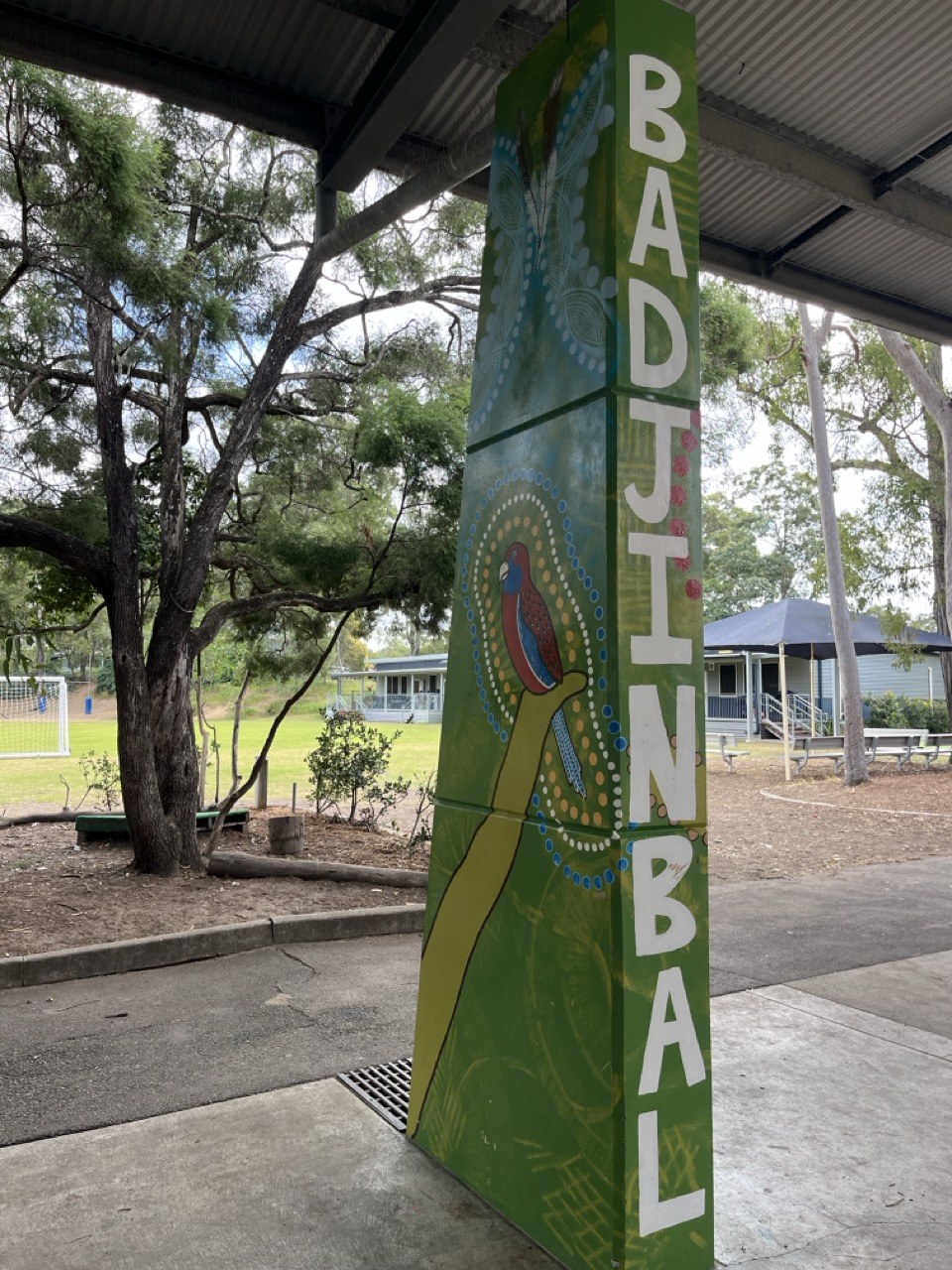
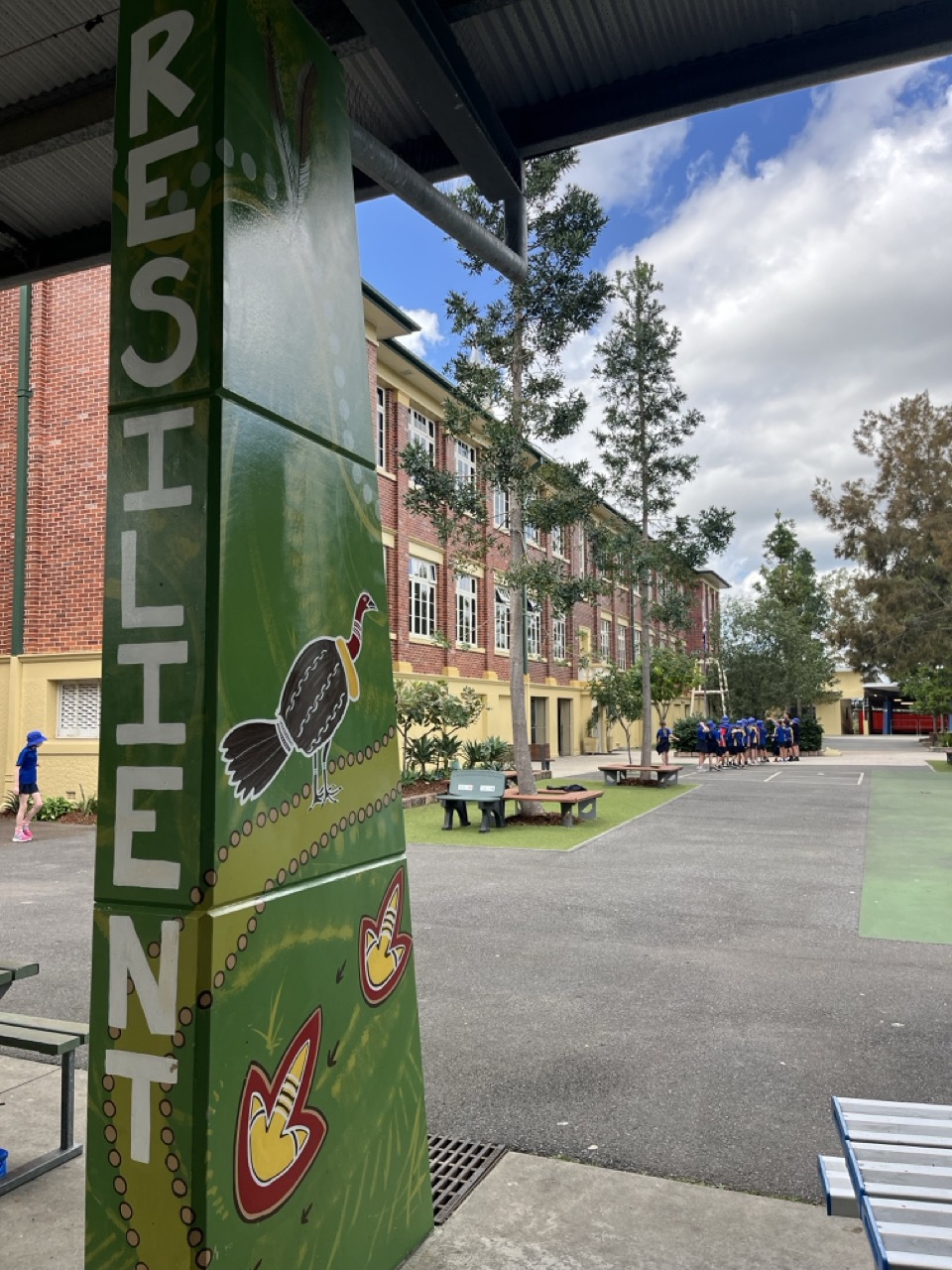
Galuma-li (pronounced gul – oo - mullee) is a -li class verb. It means to care for.
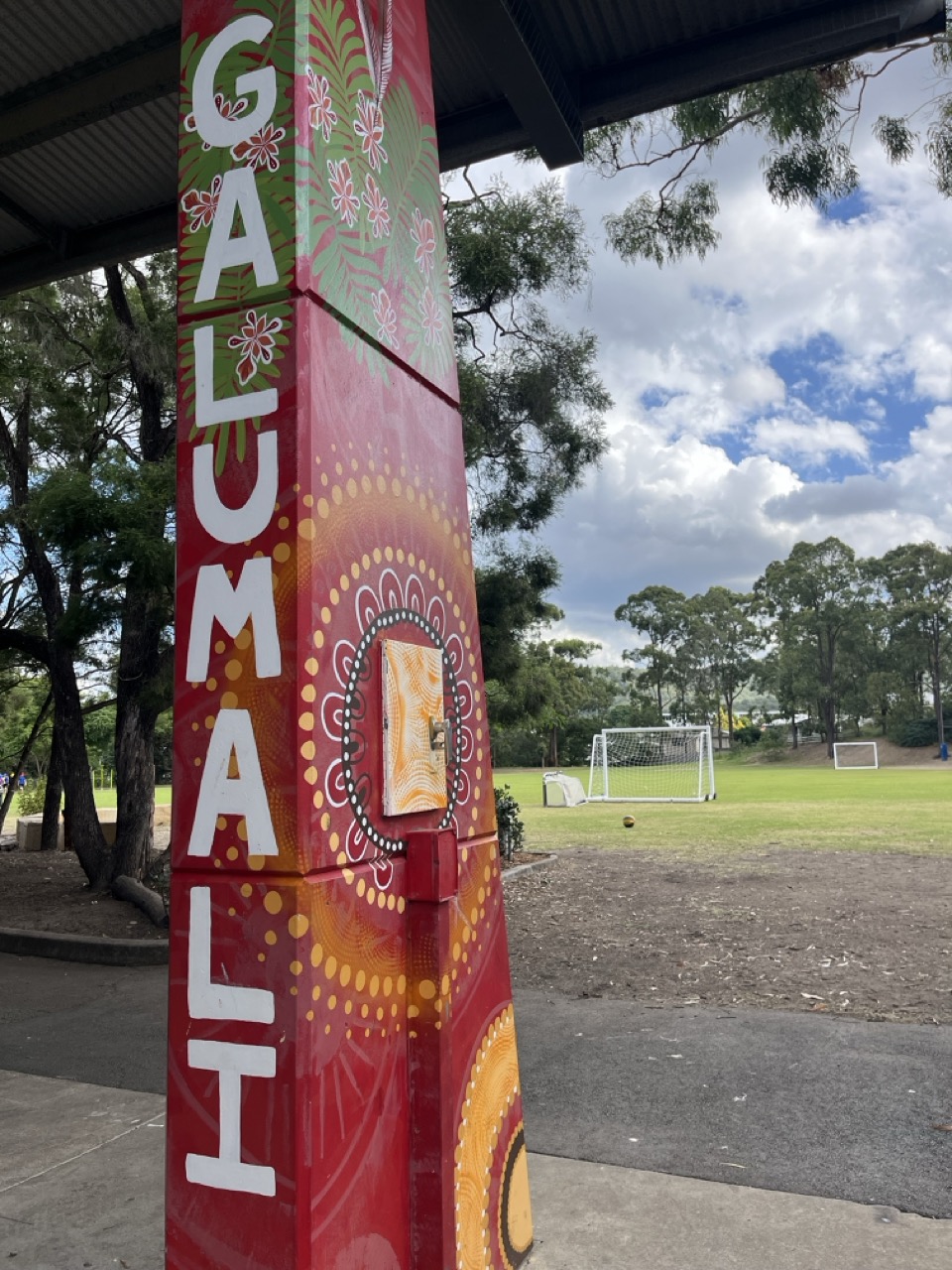
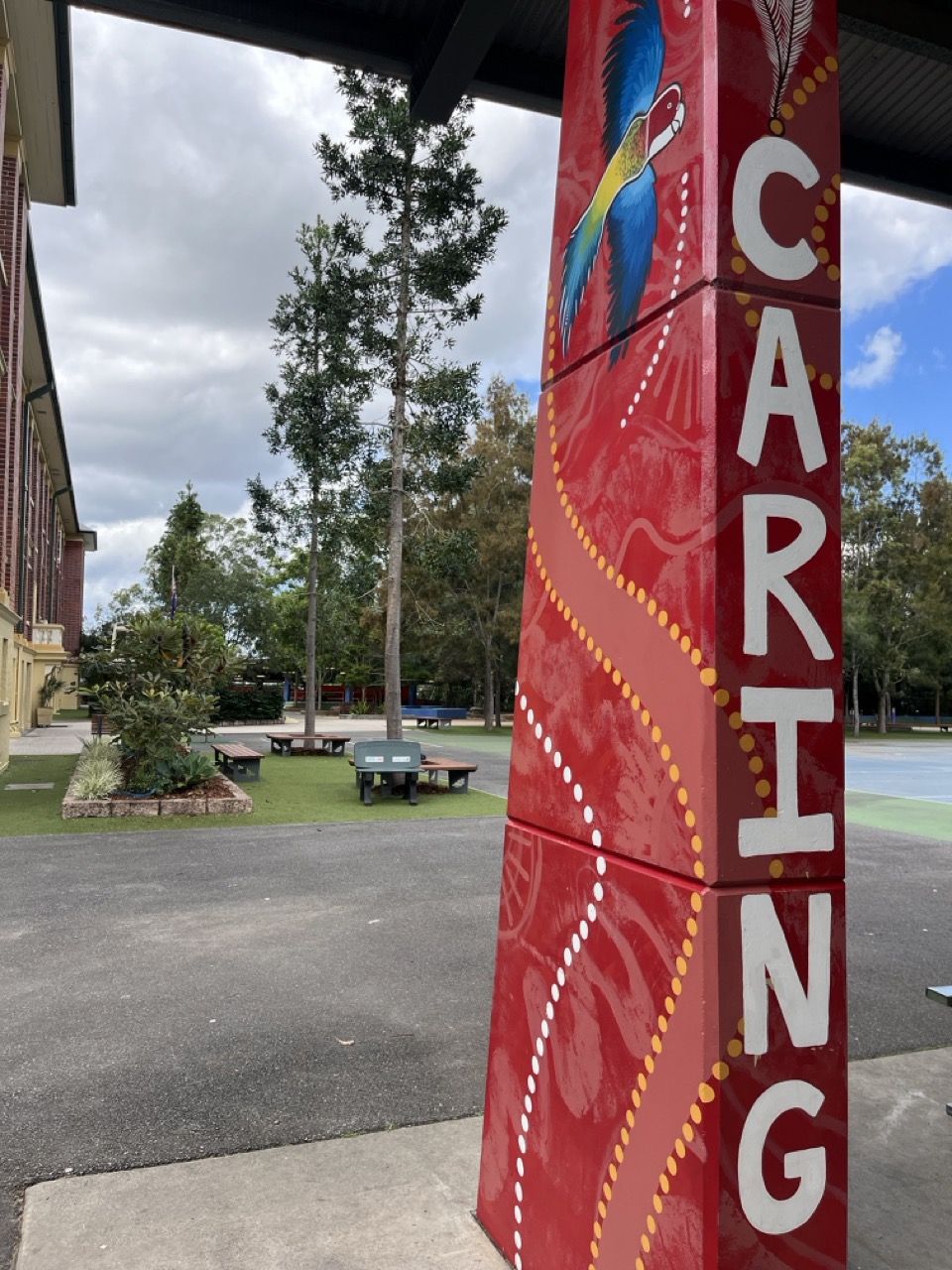
Our yarning circle was installed early in 2024, again funded by our school P&C opened through a traditional smoking ceremony by Uncle Joe.
